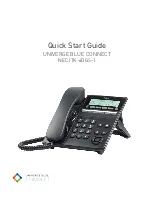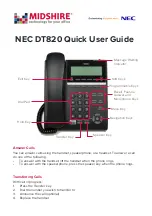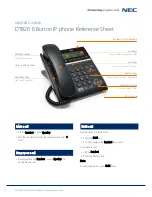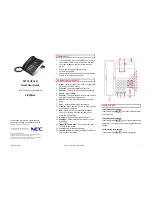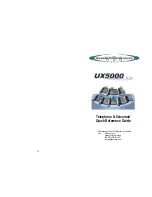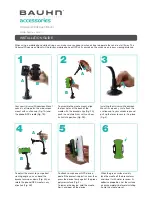
Care and safety information
43
Care and safety information
SAR
THIS MODEL MEETS INTERNATIONAL GUIDELINES FOR EXPOSURE TO RADIO WAVES
Your mobile device is a radio transmitter and receiver. It is designed not to exceed the limits for exposure to radio waves
recommended by international guidelines. These guidelines were developed by the independent scientific organization
ICNIRP and include safety margins designed to assure the protection of all persons, regardless of age and health.
The guidelines use a unit of measurement known as the Specific Absorption Rate, or SAR. The SAR limit for mobile devices
is 2 W/kg and the highest SAR value for this device when tested at the ear was 1.1 W/kg (*). As mobile devices offer a range
of functions, they can be used in other positions, such as on the body as described in this user guide (**).
As SAR is measured utilizing the devices highest transmitting power the actual SAR of this device while operating is typically
below that indicated above. This is due to automatic changes to the power level of the device to ensure it only uses the
minimum level required to reach the network.
The World Health Organization has stated that present scientific information does not indicate the need for any special
precautions for the use of mobile devices. They note that if you want to reduce your exposure then you can do so by limiting
the length of calls or using a 'hands-free' device to keep the mobile phone away from the head and body. Additional
Information can be found on the websites of the World Health Organization (http://www.who.int/emf)
Advice for limiting exposure to radiofrequency (RF) fields
For individuals concerned about limiting their exposure to RF fields, the World Health Organization (WHO) provides the
following advice:
Precautionary measures: Present scientific information does not indicate the need for any special precautions for the use of
mobile phones. If individuals are concerned, they might choose to limit their own or their children’s’ RF exposure by limiting
the length of calls, or using "hands-free" devices to keep mobile phones away from the head and body.
Further information on this subject can be obtained from the WHO home page http://www.who.int/peh-emf WHO Fact sheet
193: June 2000.
(*) The tests are carried out in accordance with international guidelines for testing.
(**) Please see the
Distance of operation
section about body worn operation, page 45.
252893179_myW-8 TRE_en.book Page 43 Vendredi, 19. janvier 2007 9:08 09
Содержание MYW-8
Страница 1: ...252893179_myW 8 TRE_en book Page 1 Vendredi 19 janvier 2007 9 08 09...
Страница 2: ...252893179_myW 8 TRE_en book Page 2 Vendredi 19 janvier 2007 9 08 09...
Страница 9: ...252893179_myW 8 TRE_en book Page 9 Vendredi 19 janvier 2007 9 08 09...
Страница 13: ...Quick start Information on the SIM card 252893179_myW 8 TRE_en book Page 13 Vendredi 19 janvier 2007 9 08 09...
Страница 19: ...Phonebook Using the phonebook 252893179_myW 8 TRE_en book Page 19 Vendredi 19 janvier 2007 9 08 09...
Страница 31: ...Applications Organiser and tools Calendar 252893179_myW 8 TRE_en book Page 31 Vendredi 19 janvier 2007 9 08 09...
Страница 35: ...Settings Profiles 252893179_myW 8 TRE_en book Page 35 Vendredi 19 janvier 2007 9 08 09...
Страница 42: ...Conformance Document 252893179_myW 8 TRE_en book Page 42 Vendredi 19 janvier 2007 9 08 09...
Страница 43: ...Care and safety information SAR 252893179_myW 8 TRE_en book Page 43 Vendredi 19 janvier 2007 9 08 09...
Страница 61: ...252893179_myW 8 TRE_en book Page 61 Vendredi 19 janvier 2007 9 08 09...
Страница 62: ...252893179_myW 8 TRE_en book Page 62 Vendredi 19 janvier 2007 9 08 09...
Страница 63: ...252893179_myW 8 TRE_en book Page 63 Vendredi 19 janvier 2007 9 08 09...
Страница 64: ...252893179_myW 8 TRE_en book Page 64 Vendredi 19 janvier 2007 9 08 09...































